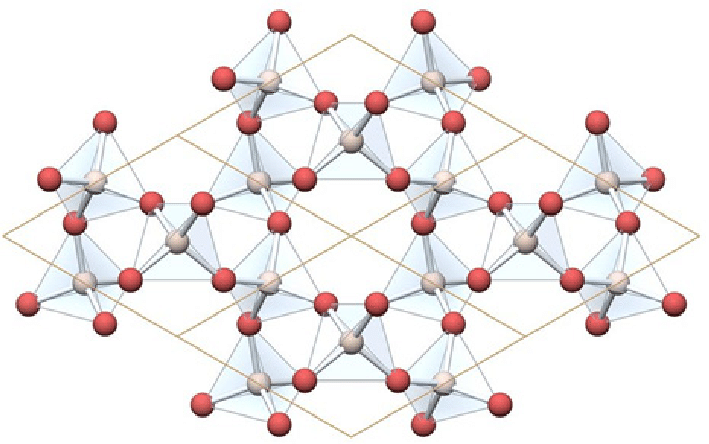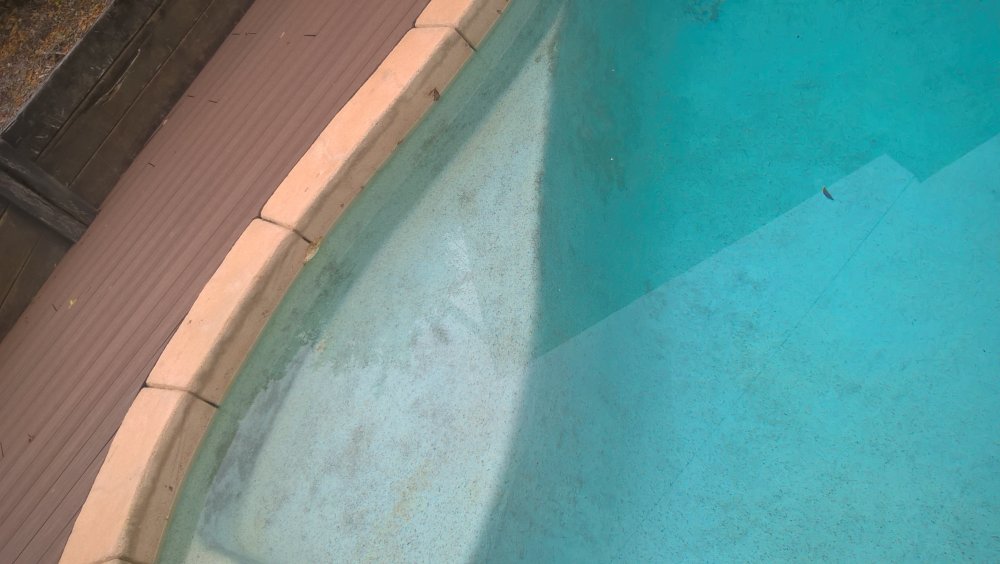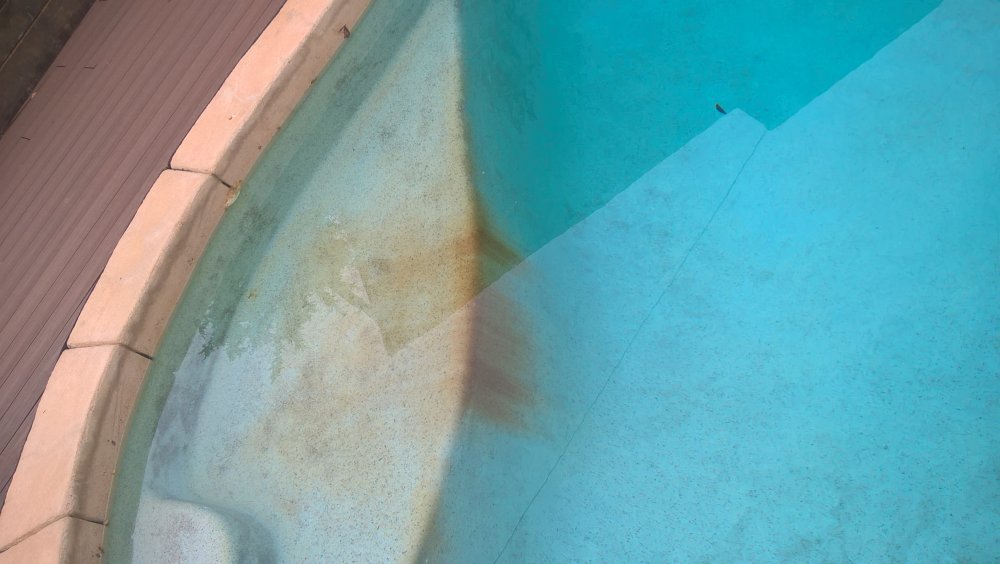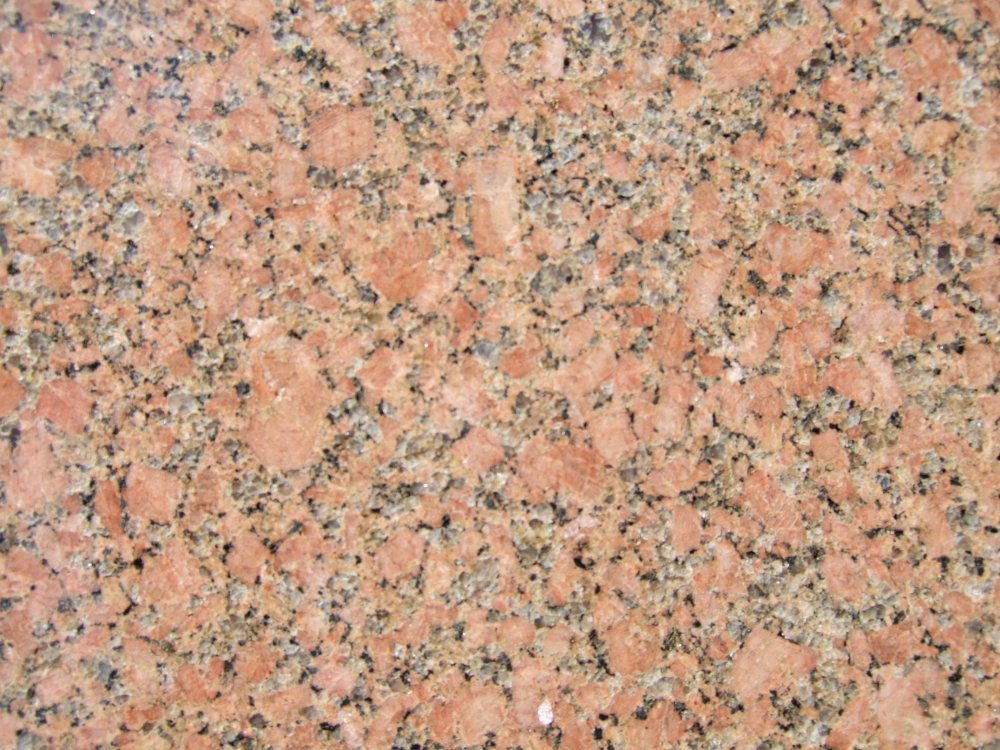

exchemist
-
Posts
3449 -
Joined
-
Last visited
-
Days Won
52
Content Type
Profiles
Forums
Events
Posts posted by exchemist
-
-
2 hours ago, NotYou said:
Thanks for the link exchemist,
However I know what Boron is used for. I just don't know if the Boron levels affects the amount of Hydrochloric Acid I require.
OK, then I can't answer that for sure. But seeing as borate is sold as a buffering agent, it looks to me as if using it may make use of HCl unnecessary. But you would need to check with a supplier of borate, I guess.
0 -
8 hours ago, IDNeon said:
No fluid has to pass through.
I didn't mean that the pressure vessel was empty.
The conditions apply as before.
If you had a balloon of air in water in this pressure vessel at 1atm.
Then you open a valve to 10atm.
What happens to the balloon in the water? How fast does it get affected by the 10atm?
Generally. Not specifically.
Does it happen nearly instantly because the water is almost incompressible?
This is a silly question.
0 -
16 minutes ago, IDNeon said:
So what would you think the time frame is for equalization?
If you open a very small valve on a gas filled pressure vessel the equalization would take some time?
But not with liquids?
How long is a piece of string?
The time will depend on the pressure differential, the size of the valve aperture, the viscosity of the fluid passing through and the size of the space the fluid has to fill.
0 -
1 hour ago, SergUpstart said:
Why not use the left isomer of sugar in the production of sweet soda. It seems like it is also sweet, but it is not absorbed by the body and therefore should not lead to obesity and type 2 diabetes and should not harm the liver as saccharin. Of course, the security would have to be thoroughly checked.
It has already been patented for that purpose, but unfortunately it is so expensive to make that it has never been commercialised.https://en.wikipedia.org/wiki/L-Glucose
1 -
27 minutes ago, SergUpstart said:
Yes, so. But whether the photon was reflected or passed on will only become clear when it is absorbed in one of the paths. What is the shape of the photon between the mirror and the absorption point????
Meaningless question.
Unless this "shape" has observable consequences, in the way the photon interacts, it is simply not real as far as QM is concerned. One could just as well hypothesise that there are pixies dancing round it on its way.
0 -
1 minute ago, IDNeon said:
Awesome. My intuition is correct but I wanted to bounce it off more physics minded persons.
Yes, this is how it is possible for divers to go down so far, as long as the gas mixture they breathe is at the pressure of the surrounding water.
0 -
On 4/30/2021 at 7:19 PM, SergUpstart said:
Imagine that a photon hits a semi-transparent mirror. What, it will split into two "ellipsoids"? But in the end, only one half will be absorbed, and the other half will disappear. And which specific half will be absorbed will be known only at the time of absorption.
Eh? No. A photon is not split in two by a semi-transparent mirror. It is either reflected or transmitted, with 50% probability of each outcome.
0 -
45 minutes ago, IDNeon said:
What are the stresses imposed on any object when equalized this way? It seems there would be very little?
If the pressure is equalised throughout the object, i.e. with no spaces at a different pressure, then merely a bit of compression of the materials of which it is made.
0 -
On 4/27/2021 at 12:25 PM, Bufofrog said:
Have you talked to a health professional about this? As you stated this seems fantastical. There could be any number of reasons for you to misinterpreting what is going on. I highly recommend that you consult with your doctor. Maybe you are experiencing a prescription drug side effect or having an allergic reaction to something. Good luck.
Agree. The hearing of these sounds, and the rather improbable persecution scenario, put me in mind of schizophrenia.
0 -
15 minutes ago, gamer87 said:
electrolytic capacitor of electronic devices is a component that involves chemistry, the electrolytic capacitor mounted on an electronic circuit can remain unused and without power for how long without its disuse affecting the useful life of the electrolytic capacitor? i have old electronics devices of 1990
This is not so much a question about chemistry as about the shelf life of specific manufactured items. I found this link, which may point you in the direction of an answer: https://electronics.stackexchange.com/questions/8794/do-electrolytic-capacitors-have-a-limited-shelf-life
From this it rather looks as though trying to put into service a 30yr old component may not be a good idea.
0 -
42 minutes ago, NotYou said:
Hi All,
One of the pH adjustment programs I use takes the amount of Boron in the water into account. I'm not sure it matters - So I'd like to know if the Boron concentration in pool water affects the amount of Hydrochloric Acid required.
If so, how? Is there a formula I can use to adjust for the amount of Boron?
Thanks in advance,
Buddy.
I don't know about a formula, but this link: https://www.borax.com/BoraxCorp/media/Borax-Main/Resources/Brochures/borates-swimming-pools.pdf seems to contain a lot of information about the use of borates in swimming pools. It seems to act as a buffer, enabling the chlorine to work in its best regime and also to soften the water by binding calcium.
If it acts as a buffer, it may be that by using borates you can fully control the pH with them alone and can dispense with the hydrochloric acid entirely, but I stress I am learning all this as I go in response to your queries, so you might want to do some further checking.
0 -
3 hours ago, IDNeon said:
OK. I really want to know something about equalizing pressures at deep ocean.
Specifically what happens if you are in a hydrolock (as I'll nickname it, think of an airlock) and you fill the hydrolock with water and absolutely no airbubbles remain, then you open even a small valve to the outside pressure to "equalize the pressure".
What I described is a torpedo tube. And it stands to reason that nothing happens.
But my mind keeps going back to the engineering principle of waterhammer.
If you have water at 1atm and you have water at 100atm and you bring them together, how do you NOT get a waterhammer?
So in the torpedo tube example what is the forces inside the tube when you have it completely flooded at 1atm, then expose it to 100atm.
Water is non-compressible so in theory NOTHING happens. But then:
1) you have an equalizing valve (why?)
2) the noncompressibility is precisely the waterhammer problem on pumps when you take water at lower pressure and stop its flow cause a spike in pressure.
Can someone discuss the nuances in this example?
It is not strictly true that water is non-compressible. Liquids are about as compressible as solids, which is to say hardly at all by comparison with gases. But they still compress a bit. If you suddenly expose the water in a torpedo tube to 100atm, you exert that pressure on the water inside and thus on the walls of the tube as well. The water will compress a tiny bit and the walls of the tube will stretch and expand a tiny bit as well. (Because it is only a tiny bit, very little work is done, so there will be very little stored energy in the compressed and stretched materials.)
Water hammer is a shockwave caused by abruptly blocking the path of a moving mass of water, thereby causing rapid change in momentum. This change of momentum requires a certain impulse (F x t) and because t is so small (because it happens fast), F has to be great. So that means water hammer creates large forces and hence pressures - a pressure wave.
When you open a torpedo tube that is full of water, you do not have this, because the water on both sides of the opening is static and no change of momentum occurs. So it won't cause water hammer, just a bit of stretching of the walls of the tube.
As for the equalising valve, I suspect that will be because when you flood a torpedo tube in practice you most certainly do have trapped air, which will compress to 1% of its volume, storing a lot of energy and causing water to flood in as it is compressed - with momentum. So there can be large forces and energies created in that scenario, which you do not want for safety reasons. So you flood it progressively rather than instantaneously.
At least, that would be my best guess as to what is going on.
2 -
3 hours ago, SergUpstart said:
From those lectures on quantum mechanics that I looked at on YouTube, it follows that the photon has no shape or trajectory. A photon has only two points, where it was born and where it was absorbed. Thus, the photon is a "black box", as it is arranged from the inside, we do not know.
Yes I suspect you touch on something important here. I'm halfway through Carlo Rovelli's book "Helgoland" at the moment. He points out that Heisenberg's approach to QM was based on deliberately restricting the model to accounting for the behaviour of systems in interactions - and not making any assumptions about what goes on in between. It is the classical mindset that assumes something goes on in between that can be defined and tracked. QM gives up that assumption. Or so I am led to understand.
I feel it is not a coincidence that @Duda Jarek's posts and links continually refer to classical or semi-classical models. I suspect this is all an exercise in semi-classical modelling and should not be taken seriously as the way nature really behaves.
0 -
3 hours ago, Duda Jarek said:
I have just found another - 2021 with more sophisticated models: "The size and shape of single photon" http://dx.doi.org/10.4236/oalib.1107179
Sure, these might be just the beginnings ... but asking for EM field configuration of photons is valid question, also from quantum perspective: as Feynman ensemble of classical ones - we can ask for e.g. dimensions averaged over such ensemble.
I'm still struggling to see what the "dimensions" of a photon, or even expectation values for a set of dimensions for an ensemble of them, can mean.
According to my understanding, QM only describes how quantum objects are expected to interact (usually expressed in terms of probability distributions) and is deliberately silent on what they "do" in between. Do any of these authors suggest that the "shape" or "dimensions" of a photon predict how it will interact with other QM objects? If not, then it seems to me to be just building castles in the air.
0 -
1 minute ago, Duda Jarek said:
"Detecting" by who, what? This is very subjective question, while I am asking for objective EM field configuration - telling anything concrete about it.
While this is a difficult question, there are at least these two articles, most importantly - providing experimental arguments (quoted in post above). What do you think about them?
My limited, chemist's understanding of QM is that you can't really speak of an "objective" EM field configuration for a single photon. If you could, it seems to me it would be a classical object rather than a QM one.
But I think we probably now need a real physicist's input.
1 -
2 hours ago, Duda Jarek said:
Photon is EM field, the basic question is energy density distribution of EM field for single photon - some rho ~ |E|^2 + |B|^2 ( https://en.wikipedia.org/wiki/Electric_field#Energy_in_the_electric_field ).
Can we say anything concrete about this energy distribution, preferably based on experimental arguments like mentioned above?
Ps. Paper by different author: https://arxiv.org/pdf/1604.03869
I'm sure you can say something about the distribution of probability of detecting the energy.
0 -
7 hours ago, NotYou said:
I, too, suspect that it's iron stains. The stains sometimes appear at the spot where I pour the salt into the pools. The salt I use is highly refined pool salt - ultra-fine pure white crystalline salt. However I don't think they remove all the contaminants, too costly.
Here's what Fishel Pools says about pool salt:
I think you're right about the chelation, here's what I found at PubMed:
Amazing stuff, hey?
Ah, so the salt is used to generate chlorine by electrolysis - which I can see makes sense, if you don't mind swimming in salt water and the associated potential for corrosion, I suppose. I didn't know that. Thanks.
0 -
3 hours ago, Duda Jarek said:
Optical photon is produced e.g. during deexcitation of atom, carrying energy, momentum and angular momentum difference.
So how is this energy distributed in space - what is the shape and size of single photon?Looking for literature, I have found started by Geoffrey Hunter, here is one of articles: "Einstein’s Photon Concept Quantified by the Bohr Model of the Photon" https://arxiv.org/pdf/quant-ph/0506231.pdf
Most importantly, he claims that such single optical photon has shape similar to elongated ellipsoid of length being wavelength λ, and diameter λ/π (?), providing reasonably looking arguments:
Is it the proper answer?
Are there other reasonable answers, experimental arguments?
To be honest I have trouble seeing how asking what the "shape" of a photon is can possibly be a question with any meaning.
One could only define a "shape" if one could find a way to interact with it in a way that did not disturb it, which does not seem possible to me. It also seems to me the uncertainty principle would suggest its extent in space would depend on the degree to which its momentum was defined.
This seems to be merely an academic exercise in exploring, for fun, the ramifications of the Bohr model - which was abandoned as a model in the 1920s, due to its obvious inadequacies.
I also note the paper is dated 2018, a decade after this George Hunter bloke, whoever he may have been, died.
But I'm not a physicist. There are others that can comment more authoritatively, I'm sure.
0 -
7 hours ago, cannongray said:
What do you think is the most likely explanation for the Fermi paradox?
Title says all.
In space travel, the numbers are awful. (Douglas Adams)
These other civilisations may well have decided, quite coolly and rationally, that spending centuries flying through empty space is a pointless exercise.
Oh, ninja-ed by @dimreepr, I see.
0 -
1 hour ago, NotYou said:
Those stains look like iron salts to me. You'll have to explain to me why you associate them with salt, as I'm a Brit and we don't have many outdoor swimming pools here. Do you use salt to treat the water in some way? Could it have iron as a contaminant, like the rock salt we put on the road in winter, which always looks a bit pink or brown?
Chemically, I would expect ascorbic acid to form a "chelate" with iron Fe³⁺ ions, which is a sort of cage molecule enclosing it. This could serve to dissolve the iron salts off the sides of the pool, if that it what it is.
1 -
On 4/27/2021 at 5:07 PM, darius222 said:
Hey!
I want to dispergate TiO2 nanoparticles (20-80 nm) in epoxy resign. I've done some research and found out that a homogeneous distribution of nanoparticles in epoxy resign can be a difficult thing to achieve without expensive machines, as they stick together and form agglomerates with diameters lager than 100 nm (see for example "Ultrasonic dispersion of inorganic nanoparticles in epoxy resin", Bittmann, Haupert & Schlarb 2009).
Now i see that nanoparticles are available with different coatings to help dispergating them in specific liquids like water, oil, ethanol. I'm not into chemistry at all sadly and therefore hope that someone here can help me: Are nanoparticles coated with Silicon Oil or SiO2 easier to dispergate in epoxy resign? Is it possible to reach a homogeneous distribution of these particles by just mixing with a normal mixer/scrambler? Has anyone experience with mixing nanoparticles into resign and can give me some tips? That would be very helpful!
Thank you!
DariusThis looks like a question for someone with experience of the paint or allied industries. I can't answer this myself but I see from this: https://www.crayvalley.com/docs/technical-paper/dispersing-titanium-dioxide-with-sma-resins-(1).pdf that TiO2 is sometimes indeed given a surface coating, in this case involving Al2O3 and something organic. It may be that either Cray Valley or Millenium Inorganic Chemical could advise you further if you contact them.
0 -
22 hours ago, popcornfrenzy said:
Aphanitic:
(Pink) Rhyolite
Porphyritic:
Andesite
Phaneritic:
Diorite
Granidiorite
Granite
Granular:
Quartzite
I kinda forgot the fact that coarse-grain is the only texture that forms within the Earth in contrast to the others that are formed on the Earth's surface.
I actually think that C is indeed Granite based on this picture I found in the internet. Thanks for the comparison I think I know now perhaps? I'm open for validation Sir
It certainly looks as if it has pink feldspar, black mica and white quartz, so could be granite. It doesn't look porphyritic to me, in that there is no glassy or microcrystalline matrix. But I'm no mineralogist. It's rather a pretty rock, actually.
0 -
27 minutes ago, studiot said:
This looks like a case for early legislation, mandating that manufacturers take back expired batteries for recycling.
From the article, the technology to do it does exist, so there is no need for it to be like nuclear waste that has to be just put in a hole in the ground. But it will be costly and nobody commercial will do it just out of the goodness of their hearts, so legislation must be the way to go, I think.
0 -
7 hours ago, popcornfrenzy said:
Oh I'll take note of that isn't the SiO2 the empirical formula or did I get that wrong?
You're right, it's the empirical formula.
Silica (quartz) is a covalent giant structure. As such, there is no molecular formula, since there are no discrete molecules in the structure. You could almost say that an entire crystal is in effect a single "molecule! So for giant structures, the empirical formula is what we use.
Here is a picture, in which you can see the SiO4 tetrahedra sharing the O atoms at their vertices with their neighbours:
 0
0




Physics of deep ocean
in Physics
Posted
Then the question becomes a different one, viz. what limits are there to the rate of pressure change the human body can withstand, or something like that.
So far as I know, the most sensitive part of the body from the point of view of pressure changes is the ear. The middle ear equalises pressure with the environment via the eustachian tube, which is linked to the nasal sinuses and is very narrow, with a sort of semi non-return valve in it, to encourage the removal of any mucus discharges etc. To pressurise the middle ear, air must go the "wrong way" through this non-return valve, leading to the sensation of deafness, relieved by swallowing, that we are all familiar with in a descending aircraft. Swallowing allows the non-return valve to open and allow air in "the wrong way".
If you increases the pressure too fast, you experience deafness, as the eardrum becomes stretched by the pressure difference, followed by pain as it is further stretched. The eardrum can easily rupture if enough time is not allowed for the ears to "pop" and thus transfer the increased pressure via the eustachian tube to the other side of the eardrum. Some people have difficulty equalising the pressure, especially if they have a cold or other inflammation of the sinuses. To you have to go carefully or you can inflict considerable pain and make people go deaf.